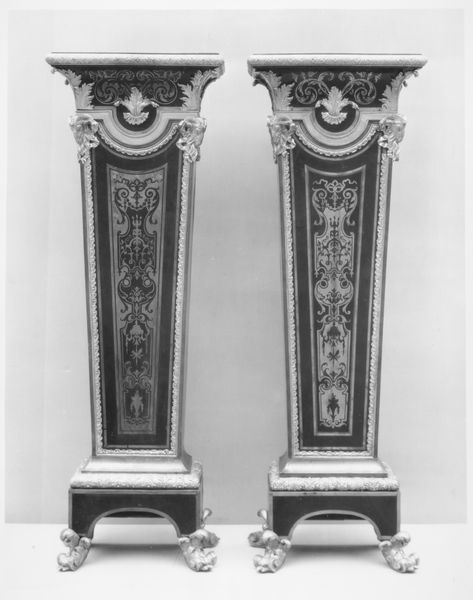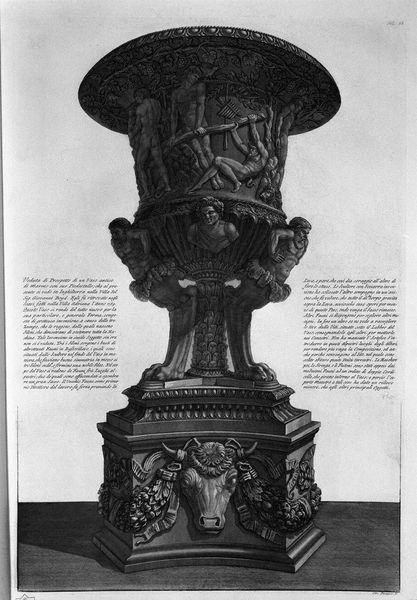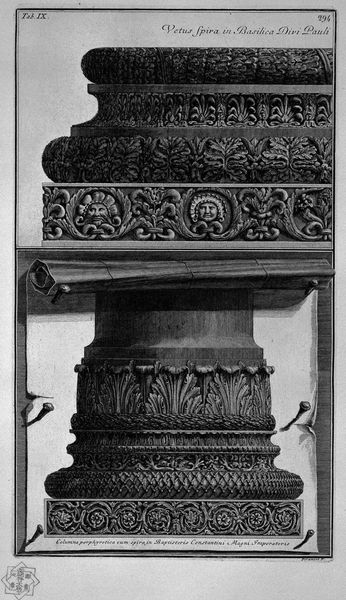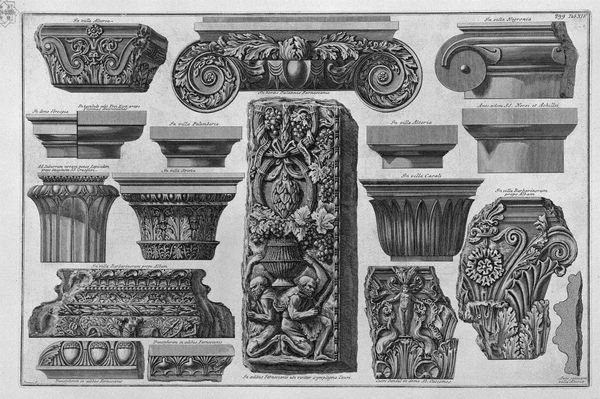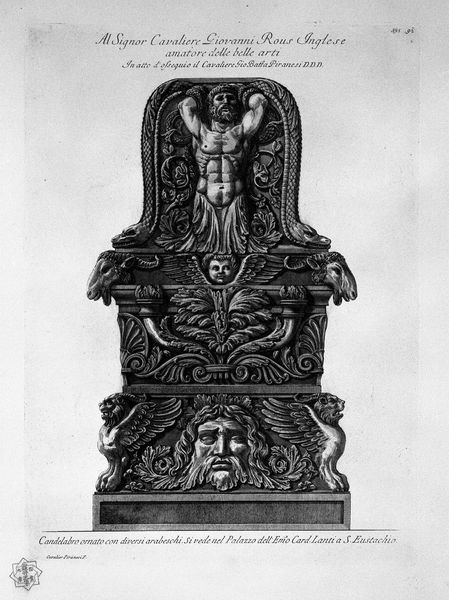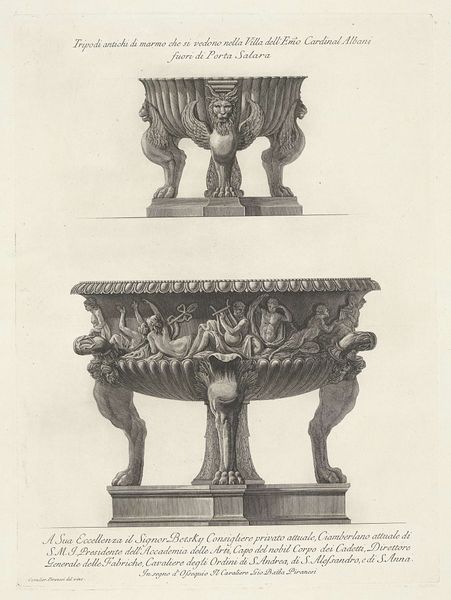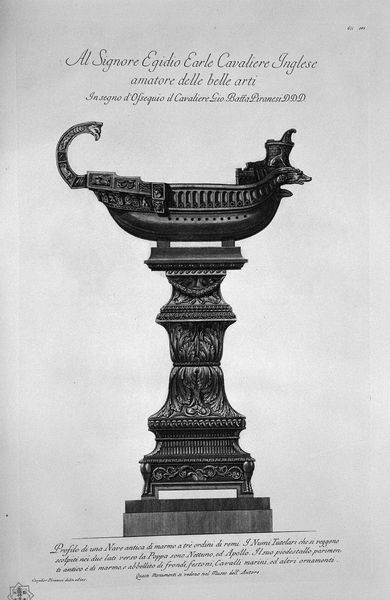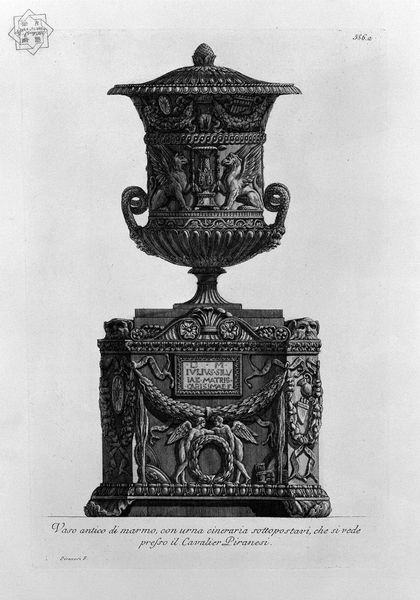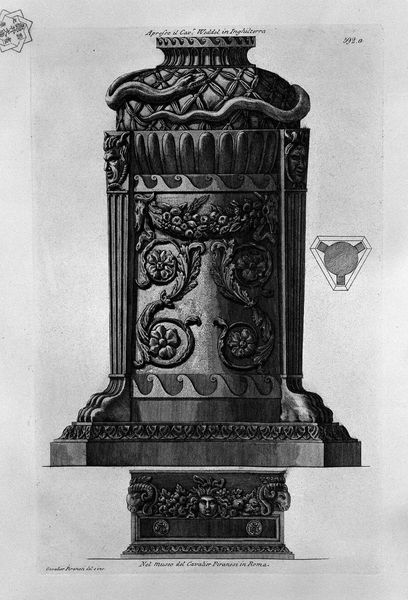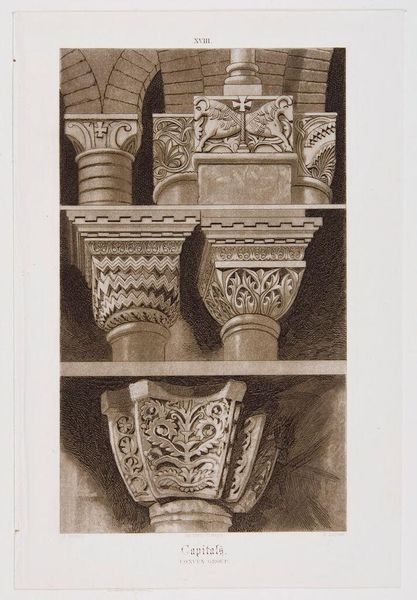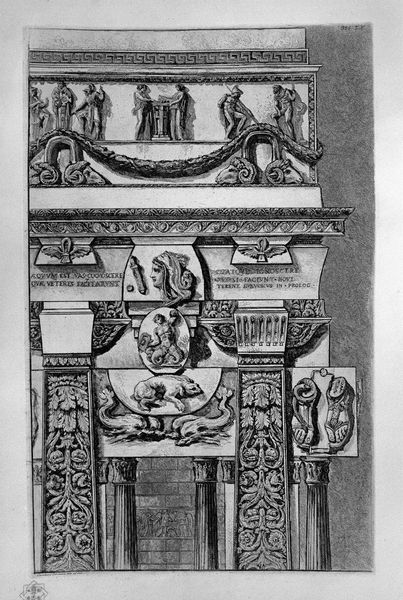
carving, metal, sculpture, wood
#
carving
#
baroque
#
metal
#
sculpture
#
figuration
#
sculpture
#
wood
#
decorative-art
Dimensions: Overall (each, confirmed): 26 1/2 × 24 1/2 × 8 1/2 in. (67.3 × 62.2 × 21.6 cm)
Copyright: Public Domain
These impressive balusters were made by Louis Le Vau in France using stone, likely limestone or a similar material easily carved. The stone's inherent qualities—its density, texture, and capacity to hold intricate detail—heavily influence the overall appearance. The carving process required skilled artisans, using chisels and other hand tools to shape the stone into elaborate forms, combining classical architectural elements with naturalistic details like leaves and lion's feet. The labor-intensive process speaks volumes about the resources available to Le Vau, who was a leading architect in the court of Louis XIV. Balusters such as these would have been part of a grand architectural scheme, likely a staircase or terrace in a high-status building. When we consider them, it’s important to remember the social context of their creation, and how the material and making process are central to its value and meaning.
Comments
No comments
Be the first to comment and join the conversation on the ultimate creative platform.
